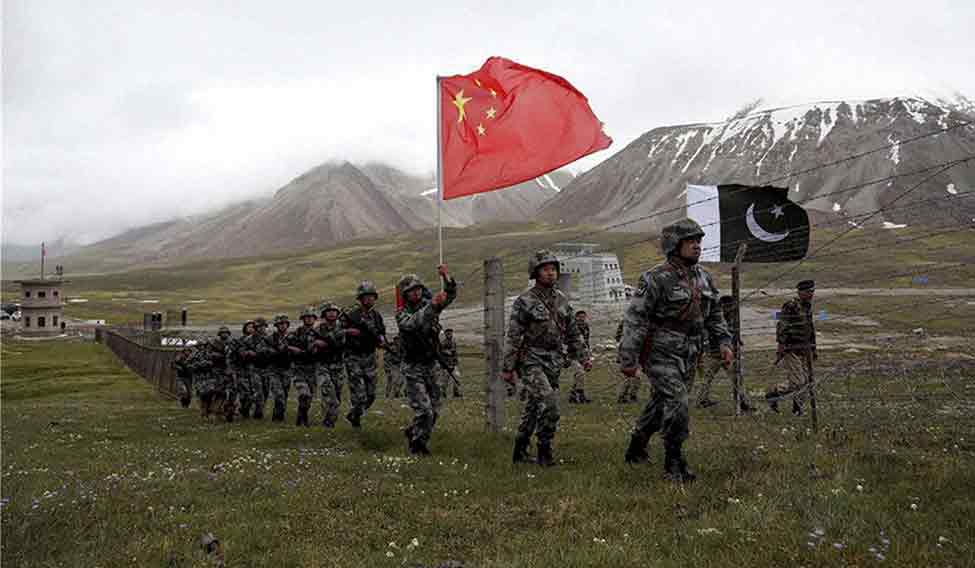In the 1990s, the Indian Army had deployed 30 tanks in the Daulat Beg Oldie sector in eastern Ladakh, bordering China. The field commanders thought the tanks were of no use in the mountains as the Chinese were not even patrolling the disputed Line of Actual Control. “The tanks were dismantled and moved to Leh, and flown to the mainland in Il-76 'Gajraj' transport aircraft,” said Maj Gen (retd) Sheru Thapliyal, former commander of the Ladakh-based 3rd Infantry Division.
Two years ago, the Indian Air Force's Boeing C-17s took off with dismantled T-72 and T-90 tanks from the Chandigarh air base. The Globemasters, which can haul 77 tonnes each, were bound for Leh, confirmed an air vice marshal. Sitting in his fourth-floor office in Vayu Sena Bhawan, he said, “The Hindon [Uttar Pradesh] based C-17s were used to send tanks and armoured vehicles to Leh airfield, from where they were sent to Daulat Beg Oldie and other areas in eastern Ladakh.” Around 100 tanks have been sent, and the operation is still under way.
After the 1962 war, India had not been developing bases close to the disputed boundary. But, recently, it realised that the Chinese were staking physical claim on disputed areas. The April 2013 incursion by Chinese People's Liberation Army in Depsang Plains made the government sit up.
A senior Army officer said, “It is not just the tanks which have been moved in, a whole infantry brigade has been moved out from counter-insurgency operations to guard against Chinese activity along the boundary.” The officer was, till recently, a senior functionary of the 3rd Infantry Division, which defends eastern Ladakh.
In April 2013, more than 50 Chinese soldiers had intruded and staked claim on Depsang Plains, where the Indian Air Force had recently reactivated an airfield. India then rushed in troops in large numbers and made the Chinese retreat, without any preconditions.
“The Air Force had provided a great deal of support to the Army at that time,” said Air Marshal (retd) R.K. Sharma, former vice chief of the air staff. Senior Air Force sources said 13 helicopters, including the mid-weight Mi-17s, were deployed to ferry men and material during the three-week-long conflict.
After the Chinese retreated, the Army moved in to bridge the gaps in troop deployment. “Army patrols would go for 14 days or 21 days, and cover large areas,” said a senior flag officer in the Directorate General of Military Operations. “It was felt that more forces need to be deployed to protect the area from the Chinese.”
In 2014, the top brass in the northern command started the hunt for a brigade (army formation with close to 4,000 troops) which could be deployed at altitudes higher than 15,000ft. They realised that the 81 Brigade, aka the Bakarwal brigade, could be sent to the Daulat Beg Oldie sector with a tank formation. Combined, they could defend a possible tank invasion by the Chinese, launched through their Western Highway.
“The Western Highway connects Lhasa with Aksai Chin area,” said Thapliyal, who has surveyed the area extensively. “With our tank formations in Daulat Beg Oldie, we can cross the Demchok funnel (where the Indus enters India from Tibet) and intercept the highway in case of hostilities.”
General Dalbir Singh, the Army chief, personally picked the brigadier to head the formation. His headquarters is Durbuk—14,000ft above sea level—near Daulat Beg Oldie and en route to the disputed Pengong Tso lake.
Under the 81 brigade, three infantry battalions (with close to 900 to 1,000 troops each) have been deployed in the area. This is in addition to the 114 and 70 brigades, which are part of the 3 Infantry Division based in Ladakh. The Siachen brigade was formerly under the 3 Infantry Division. But, now the division has been relieved of its responsibilities in the glacier and has been asked to focus on the border with China. The Siachen brigade is now under the Leh-based 14 Corps, headed by a lieutenant general.
An officer in the directorate general of military operations said that one battalion was deployed at 16,000ft. This means that far-flung areas are being visited more often by the troops, the officer said.
Sources deployed in the area said the new armoured brigade headquarters, too, is likely to come up in the same area, as beyond it is the plateau where the tanks can run up to the Chinese-held territory. “This is the only place in the region where you can have tank runs,” Thapliyal said. The Army has deployed two tank regiments—the 85th Armoured at Nyoma and the 4th Horse at Thangtse, both in Leh.
The attempts by the PLA to carry out incursions into Indian territory are also attributed to the increasing presence of Indian troops there. The Chinese have objected to the presence of troops and tanks in the area, and some state-owned media outlets indicated that Chinese investments in India may get affected by this aggressive stance.
“Every country constantly prepares to defend her territorial integrity. Even China does so. Therefore, India inducting armoured formations should not be seen as aggressive behaviour,” said Lt Gen (retd) S.L. Narasimhan, former defence attache in China.
Narasimhan, who recently retired from the Army, said there was no need for India to get “unduly concerned” over the reports of joint patrolling by China and Pakistan on the boundary shared by them in Pakistan-occupied Kashmir (PoK).
“China and Pakistan carried out joint patrolling along Xinjiang-PoK border against the backdrop of reports of their 100 people joining Islamic State,” Narasimhan said. “Analysis of the pictures also shows that both patrols have remained on their own side. While we need to be watchful, India should not be unduly concerned.”
From the days of 'seven-foot Chinese soldiers' bogy to deploying forces in offensive manner on the border, India has shed the weakling mindset and wants to settle issues with its northern neighbour as an equal.







